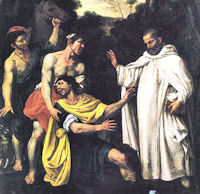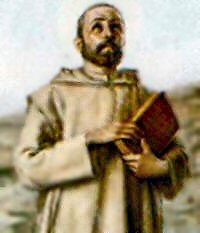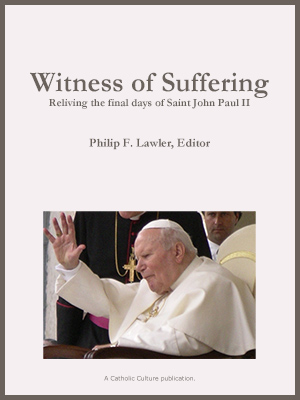Ordinary Time: June 25th
Saturday of the Twelfth Week of Ordinary Time
Other Commemorations: St. William, Abbot
» Enjoy our Liturgical Seasons series of e-books!
Saint William was born to noble parents at the beginning of the twelfth century. He was orphaned while still an infant and was raised by relatives. He built a monastery on the summit of Monte Vergine near Naples, and established a community of hermits, to whom he gave a rule inspired in great measure by that of St. Benedict. He died in 1142. According to the 1962 Missal of St. John XXIII the Extraordinary Form of the Roman Rite, today is his feast.
St. William of Monte Virgine, Abbot
 William was born in Vercelli, Italy, in 1085. His parents died when he was a baby. Relatives raised him. When William grew up, he became a hermit. He worked a miracle, curing a blind man, and found himself famous. William was too humble to be happy with the people’s admiration. He really wanted to remain a hermit so that he could concentrate on God. He went away to live alone on a high, wild mountain. No one would bother him now. But even there he was not to remain alone. Men gathered around the saint and they built a monastery dedicated to the Blessed Virgin. Because of William’s monastery, people gave the mountain a new name. They called it the Mountain of the Virgin.
William was born in Vercelli, Italy, in 1085. His parents died when he was a baby. Relatives raised him. When William grew up, he became a hermit. He worked a miracle, curing a blind man, and found himself famous. William was too humble to be happy with the people’s admiration. He really wanted to remain a hermit so that he could concentrate on God. He went away to live alone on a high, wild mountain. No one would bother him now. But even there he was not to remain alone. Men gathered around the saint and they built a monastery dedicated to the Blessed Virgin. Because of William’s monastery, people gave the mountain a new name. They called it the Mountain of the Virgin.
After a while, some of the monks began to complain that the lifestyle was too hard. They wanted better food and an easier schedule. William would not relax the rule for himself. Instead, he chose a prior for the monks. Then he and five faithful followers set out to start another monastery, as strict as they were used to. One of his companions was St. John of Mantua. Both William and John of Mantua were leaders. They realized as time went on that they would do better if they split up, each to start a monastery. They were great friends, but they saw things differently. John went east and William went west. Both did very well. In fact, both became saints.
Later, King Roger of Naples helped St. William. William’s good influence on the king angered some evil men of the court. They tried to prove to the king that William was really evil, that he was hiding behind a holy habit. They sent a bad woman to tempt him, but she was unsuccessful. It seems that she repented and gave up her life of sin. St. William died on June 25, 1142.
He is also known as St. William of Vercelli, or St. William of Monte Vergine.
Symbols: Wolf; trowel; lily; passion flower.
Often Portrayed as: a pilgrim, usually near Santiago de Compostela; abbot near a wolf wearing a saddle; receiving an appearance by Christ; saddling a wolf that killed his ass.
Highlights and Things to Do:
- William's pilgrimage to the tomb of St. James the Apostle in Spain was the turning point of his life. Is it not easily possible for you to make a pilgrimage to some holy place in your neighborhood now during the summertime? First of all, however, are you familiar with the relics in your own parish church? Remember that any visit to a church is a pilgrimage to the grave of a saint!
- Read more about the life of St. William here and the monastery he founded, Monte Vergine.
- See St. William's Founder Statue in St. Peter's Basilica.








